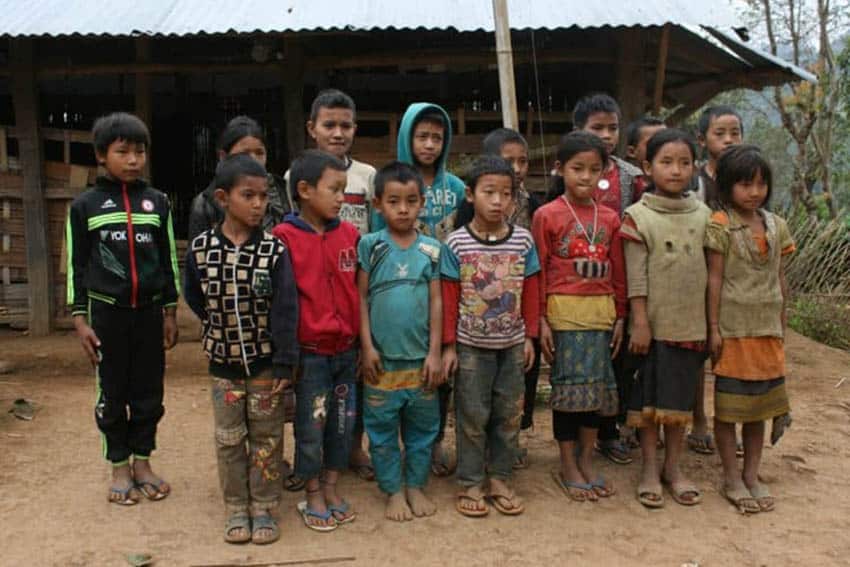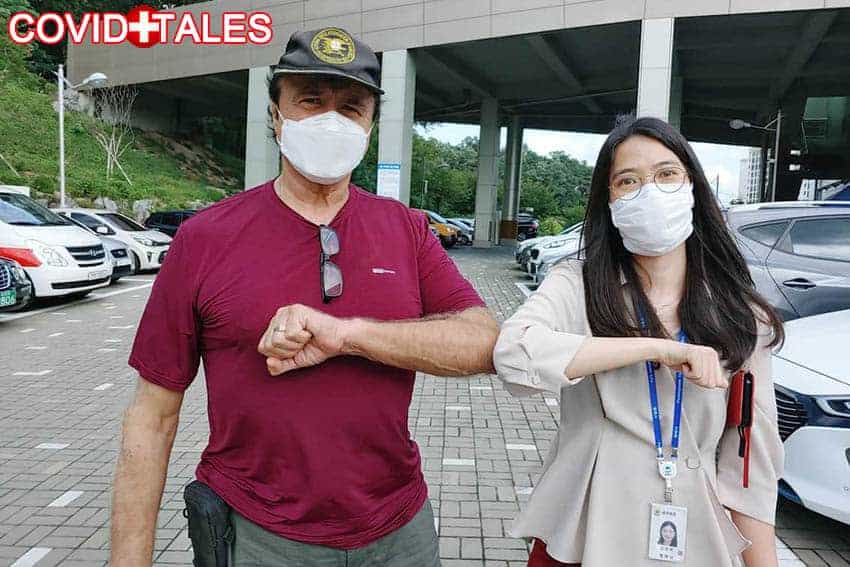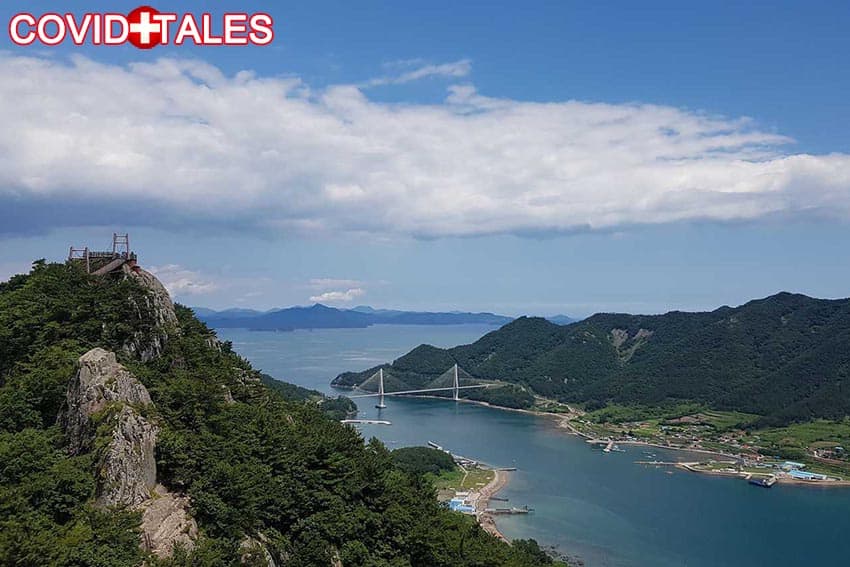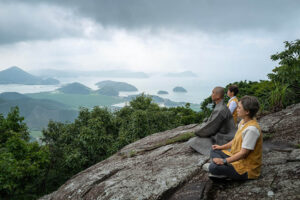
Visiting South Korea’s Demilitarized Zone independently

By Karin-Marijke Vis
“Color of your shoes?”
That is probably the oddest question I have ever been asked at a checkpoint. Before I can answer the soldier peeks through my open window and concludes, “Ah, purple slippers,” referring to my flip-flops.
He confers with a comrade-in-arms next to him, in Korean, and I assume they are discussing the color of our clothes, our (sun)glasses, and probably the color of our hair and eyes as well. It is all duly noted on a piece of paper.
“Thank you,” he says and waves us on.
I don’t care what details they want to write down about our appearances. I feel lucky to be here and to be able to visit this place independently because I had read you could only see it on a tour: the Demilitarized Zone, commonly referred to as the DMZ.

After World War II, Korea got caught in the web of the Cold War, resulting in the Korean War (1950-1953). The war never ended with an official peace treaty but came to a standstill after North Korea, China and the US signed an armistice (South Korea never signed it, wanting to keep fighting until the peninsula was unified again), upon which a 4-kilometer-wide cease-fire zone was constructed: the Demilitarized Zone (DMZ).
As the name suggests, the area should be free of military presence but in reality, this is one of the – if not the – most militarized areas in the world. Over the years both sides have inched closer to each other and today the shortest distance between two opposite guard posts is a mere 750 meters.
Visiting the DMZ independently?
On arrival in South Korea, my partner Coen and I had read about guided tours to the DMZ, just north of the capital of Seoul. But visiting places in groups doesn’t appeal to us and we had let the matter rest.
“Maybe later, let’s first drive around for a couple of weeks. Who knows what opportunities may arise,” we said to each other.
On our way from Seoul to the east coast, we came across a tourist information center where I scored a map of the region, in English. Brown rectangles indicated sights.

“Look what it says here,” Coen said, indicating two points. “Fourth tunnel and the Eiji Observatory. Maybe we can go there independently.” It was worth a try. We drove deeper into the mountains, beyond Yanggu, farther north and uphill, until a soldier stopped us.
He was frantically moving his lower arm up and down from his elbow as if he thought we’d drive straight on and crash into the barrier across the road ahead of us. We slowed down and he motioned us to come closer until the car tires precisely hit the white line across the asphalt. “Halt!”
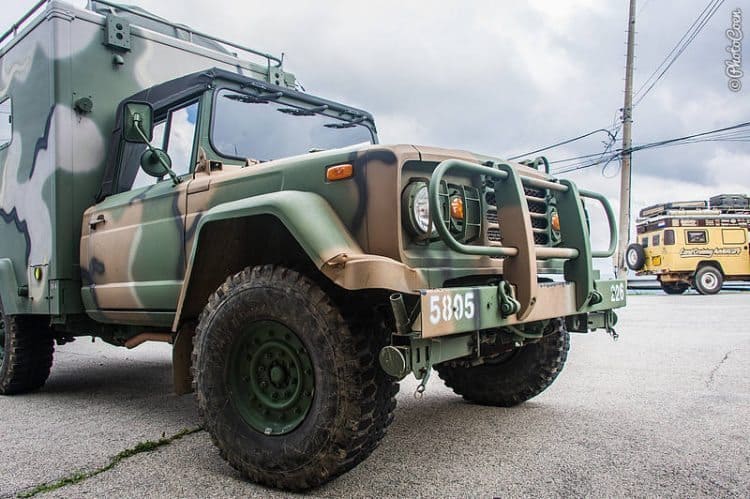
The young, friendly-looking soldier didn’t speak English and so we communicated in sign language. It was quickly understood we couldn’t drive on, the question was why not.
A second soldier approached us, informing us we needed a ‘pest card’, which we concluded was either a press card or a permit. To get one we needed to turn around and go to Yanggu.
Back in Yanggu, we found the tourist information center. Here we bought a day pass for 6,000 Won (about USD 5, for 2 persons and car), which allows you to visit the observatory as well as the 4th tunnel. With our papers in order, we returned to the checkpoint once more, handed over the pink slip, had the thorough inspection of our appearances and dress mentioned earlier, and could drive on.
A peek into North Korea
A few minutes drive brings us the ridge of the mountain. From left to right, as far as we can see, runs a fence topped with barbed and razored wire slicing a vastness of forested mountains.
It’s just a tiny section of the 250-kilometer barricade from the Yellow Sea in the west to the Sea of Japan in the east, demarcating the southern side of the DMZ. The sight turns our stomachs.
The road turns left and we follow it for a couple of hundred meters until it ends in a parking lot with the observatory building. A staircase brings us to the second floor where we enter an auditorium with a floor-to-ceiling, wall-to-wall window offering a view of a stunning, lush mountainous area.
Seventy percent of South Korea is mountains, and since nature knows no frontiers, they simply continue to roll into North Korea. The colors of green vegetation below a blue sky dotted with white clouds, and green-grayish mountains in the distance make it look like a colorful painting.
An English-speaking soldier offers to explain what we’re looking at.
“Sure.”
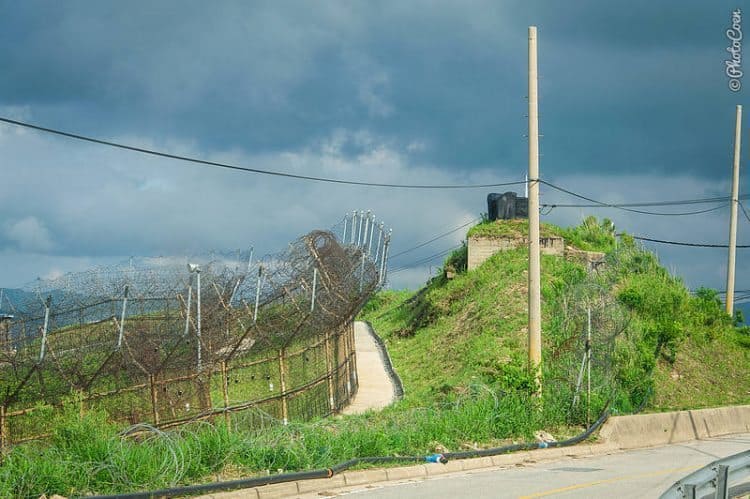
“No photos,” he first instructs us.
“No photos?”
We just had taken photos while driving along the fence and now we couldn’t? How odd.
The soldier points out mountain peaks, mentioning their names. They mean nothing to us, but some of them are very important to all Koreans, and many South Koreans would like to go there.
He also indicates guard posts – tiny white squares – and the Fairy Waterfall, so named because, at one time, North Korean soldiers bathed there to seduce South Korean soldiers.
Nobody Worries About the DMZ
We talk about how real the threat of North Korea is, especially because of North Korea’s ballistic missile experiments over the past couple of months. One of the things that have surprised us is how little worried the South Koreans are, or seem to be, about it.
“We used to worry but not anymore. The threats happen too often. I think the last time we stocked up en masse was about fifteen years ago,” a young Korean told me.
Others explained that while they are sure that it is better armed, North Korea knows it may win a battle but never the war since South Korea has much more support worldwide. But this soldier here has different feelings about the subject. “Yes, we are afraid that North Korea will invade. Every day we are afraid.”
We thank the soldier for his time, say goodbye and return to Yanggu, ready to visit the second site of importance, the Fourth Tunnel.

The Fourth Tunnel
In the 1960s-1980s, North Korea dug tunnels under the Demilitarized Zone into South Korea in an attempt to mount a surprise attack on their neighbors from underground.
The tunnels were discovered, that is to say, four of them: three just north of Seoul in the 1970s and the fourth farther east near Yanggu in the early 1990s. There is speculation whether there are more, but nobody on the South side really knows.
Northwest of Yanggu lies the fourth tunnel and, again, we can drive there on our own, and park our vehicle in an empty parking lot. First, we check out the visitor center but that is a bit of a disappointment as the explanatory panels – partly about the tunnels, partly about the Korean War – are all in Korean.
It bothers me, so I walk around until I find a soldier who speaks English and ask him for a brochure in English. They don’t have that either but he offers to walk with us and explain some parts of the exhibition.
He starts translating texts about all types of war material and gear in showcases but I am much more interested in the stories displayed on the wall.
“Oh, that’s about the battles,” he answers.
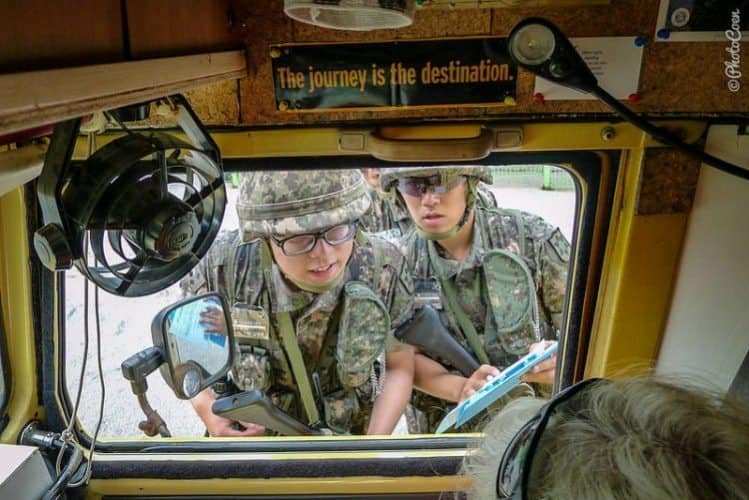
“I understand. That’s where my countrymen fought, from the Netherlands. Please tell me,” I ask.
I think he now understands my frustration at there not being anything written in English. But I am asking too much. Not because he doesn’t want to help but the stories are beyond his translation skills.
When he reads the story about the battle of Heartbreak Ridge he says, “The Netherlands fought here. They did good,” I have no idea if that’s what it says and let the matter rest.
Before we can enter the tunnel we are taken to an auditorium with a huge screen for some propaganda. The volume must surely be audible in Yanggu so I hunt down the soldier once more with the request to turn down the sound.
We are appalled by what we get to watch.
Not the background information that is given – which we do appreciate – but the nationalistic, fear-mongering rhetorics demonizing North Korea and heralding South Korea are just awful.
We just don’t see the need for dramatizing a situation that is serious enough as it is.
Properly Informed
At last, the soldier feels we’re properly informed to visit the tunnel, and accompanies us. South Korea learned about this tunnel from a defected North Korean soldier and searched for it by drilling holes into the mountains until one drill hit a void.
The tunnel had not yet been finished and the South Koreans built the last 700 meters to create an opening on their side. They closed the tunnel down underground at the end of their side under the DMZ, which is now monitored with CCTV, while using the first part of the tunnel for tourist purposes.

The North Koreans built this tunnel of roughly 1.7 by 1.7 meters wide using dynamite. It is high enough for the short North Koreans to walk through, the soldier explains.
No photos allowed. We were invited to sit down in a narrow-gauge tourist train and are taken into the tunnel for a couple of minutes before returning to the open air.
Both Sites are Surreal
Even after having seen both the tunnel and the DMZ up close, both sites remain surreal. They should belong either in the past or in a thriller, but not in today’s world, in 2016, in real life.
The mountains in the South are the same as in the North, the people who live on either side have a shared history of thousands of years.
Wildlife proliferates in the DMZ, having all the space they need and no fear of being hunted down. In fact, previously endangered species of birds such as the Manchurian crane thrive here.
Yet, on both sides of this no-man’s land soldiers stand guard, 24 hours a day, 365 days a year. Just as Korean civilians, they want peace and a safe and healthy environment for their children to grow up in. Needs are the same on both sides. Why this fence?
Borders are among the most ridiculous things mankind has ever come up with, with the DMZ currently representing the worst kind possible. We hope for both sides that their dream of unification will soon be a reality.
Practical information:
While you can visit both places independently you do need your own transportation. A good option would be to rent a car in Seoul and go for a 2 or 3-day trip to Yanggu. While in the area, the Peace Dam near the town of Hwacheon (north of Chuncheon) is also worth a visit.
Visit the Dora Observatory and look down at the DMZ.
- Korea: The DMZ Without a Guide - December 13, 2016
- Ecuador: Hiking in the Amazing Amazon - May 30, 2016
- Ecuador: Riding Above the Trees in the Chocó Forest - January 30, 2015


